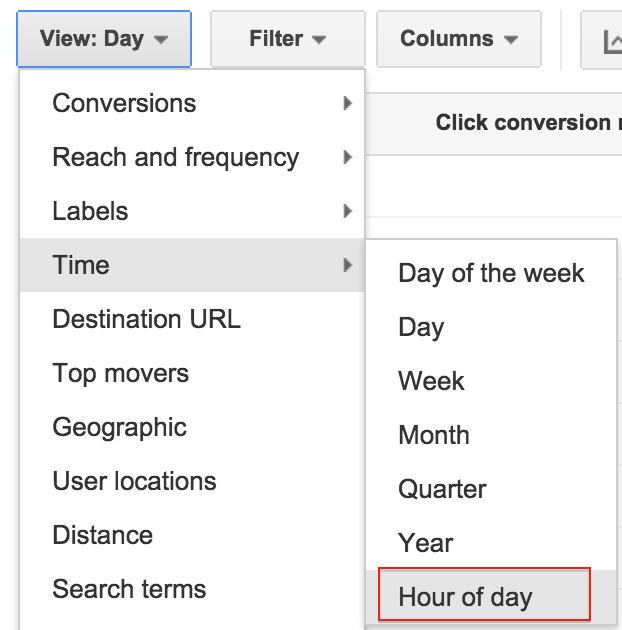Series week continues as we assess PPC management across different industries. Yesterday Rachael covered PPC for the IT and Technology industry. Today, Kevin covers the healthcare industry, and specifically business-to-business.
One of the unique components of the healthcare industry, is that it’s one of the responsibilities of our (at least for American readers) Federal Government to ensure that the industry remains competitive as possible.
Great for consumers, but for advertisers it translates to expensive clicks in a cutthroat marketplace.
So, how do you, the PPC manager, thrive in a marketplace where not only do you have to compete against similar businesses, but also against a federal mandate that prevents the lessening of competition.
Niche Campaigns
One of my clients sells a product that can be used by practices across the entire healthcare industry. It’s widely applicable, which makes for a great product, but also allows for a highly segmented approach to PPC.
The umbrella of “Healthcare” is vast and far-reaching.
Just shooting off the cuff, the term Healthcare can be more finely carved into the follow:
- Primary care
- Secondary care
- Tertiary care
- Quaternary care
Primary care encompasses both ambulatory care and urgent care, while secondary care houses the segments like cardiology, urology and dermatology.
These can be drilled down ever further. For example:
- Cardiology
- Cardiac electrophysiology
- Echocardiography
- Interventional cardiology
- Nuclear cardiology
In my experience, a keyword that includes information about a specific segment of the healthcare industry, as well as information about the product performs better than a product-only keyword.
Or, to visualize it a bit better:
Keyword: mental health product
tends, in my experience, to perform better than:
Keyword: product
One important caveat here is that some of the niches are specific enough that phrase match, exact match, and broad modified match will severely limit search volume.
I’m not a tremendous proponent of broad match— especially for accounts that are liable to generate irrelevant leads— but in the healthcare industry I have seen a surprising quality of lead come through broad match channels (though results here are obviously not guaranteed).
Targeting Mobile
You’re sick of hearing about the ubiquity of mobile by now, right? We know, we know, it’s taking over the world. But until we see this profound prevalence in our accounts, aren’t we somewhat immune from the implications?
Well, in my experience with healthcare digital marketing— and more specifically, B2B healthcare digital marketing— mobile is that prevalent.
In fact, one of my healthcare industry clients sees more traffic from mobile and tablet than from desktop. And not only were there more clicks, but conversion percentage was up on mobile and tablet as well.
In healthcare business-to-business, purchasing power at medical practices often lays in the hands of the practitioners themselves. It stands to reason that physicians— almost invariably— are connected via mobile, tablet, or if they work for a practice that resides on the cutting edge of technology, a phablet.

So write mobile-preferred ad copy, utilize mobile bid modifiers, and— if your client has the resources— implement mobile specific landing pages.
Probably these physicians have access to their mobile devices not only from the office, but also from home, where they kick their argyle socks up onto the audomin for a nice relaxing couple hours of…administrative work.
Which brings us to our next tip:
Dayparting
Many medical practitioners work unconventional hours. What this means for advertisers is that in heathcare, leads might not be generated during typical work hours, as one might suspect.
For the physician who both practices medicine and handles administrative duties for his or her practice, it’s likely that purchasing decisions are made once the labcoat has already been shirked.
Use the dimensions tab, and segment by “hour of day”, to identify if your target audience is liable to convert at an unorthodox hour.
Display Network
As touched upon at the top of this post, the healthcare industry is nothing if not competitive. If competition weakens, then costs increase, quality decreases, and the encouragement for innovation becomes less plentiful.
Given this competition, it can be very expensive to get your advertisements in the top three positions of a SERP, where valuable ad extensions such as sitelinks and callout or review extensions can afford your ad more real estate. Especially for companies with smaller budgets going up against the giants of the healthcare industry, this harsh reality can spell difficulty, if not demise.
Enter Display Network, your unlikely hero.
Although advertising on the Display Network is more passive than its Search Network counterpart, and therefore sacrifices something in the way of relevance (read: click and conversion rates), the sheer volume of exposure vs the relative affordability of clicks can be a fruitful approach to PPC.
Summary
So, in short, if you want to get a leg up on your competitors in a fiercely cutthroat healthcare industry:
- Don’t blow your budget on general terms— drill your audience down to specific medical specialties.
- Harness the power of mobile!
- Don’t assume that your best chance of converting is during the work day.
- Try the Display Network— the pricing differential could be exponential.
(featured image by Keith A. Seiffert/Flickr)





